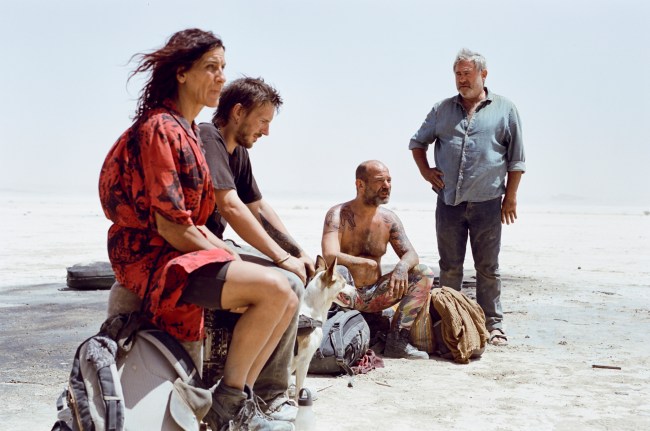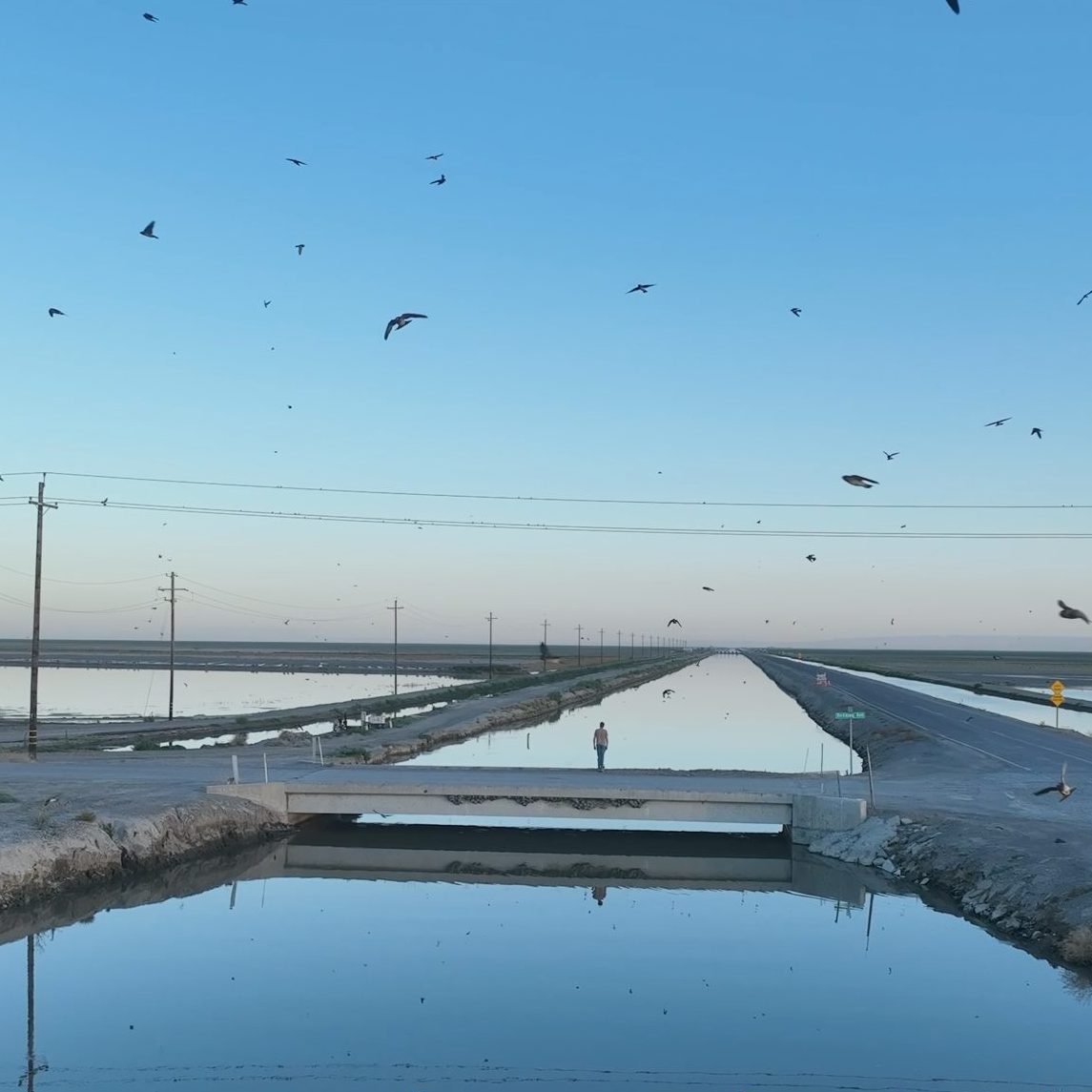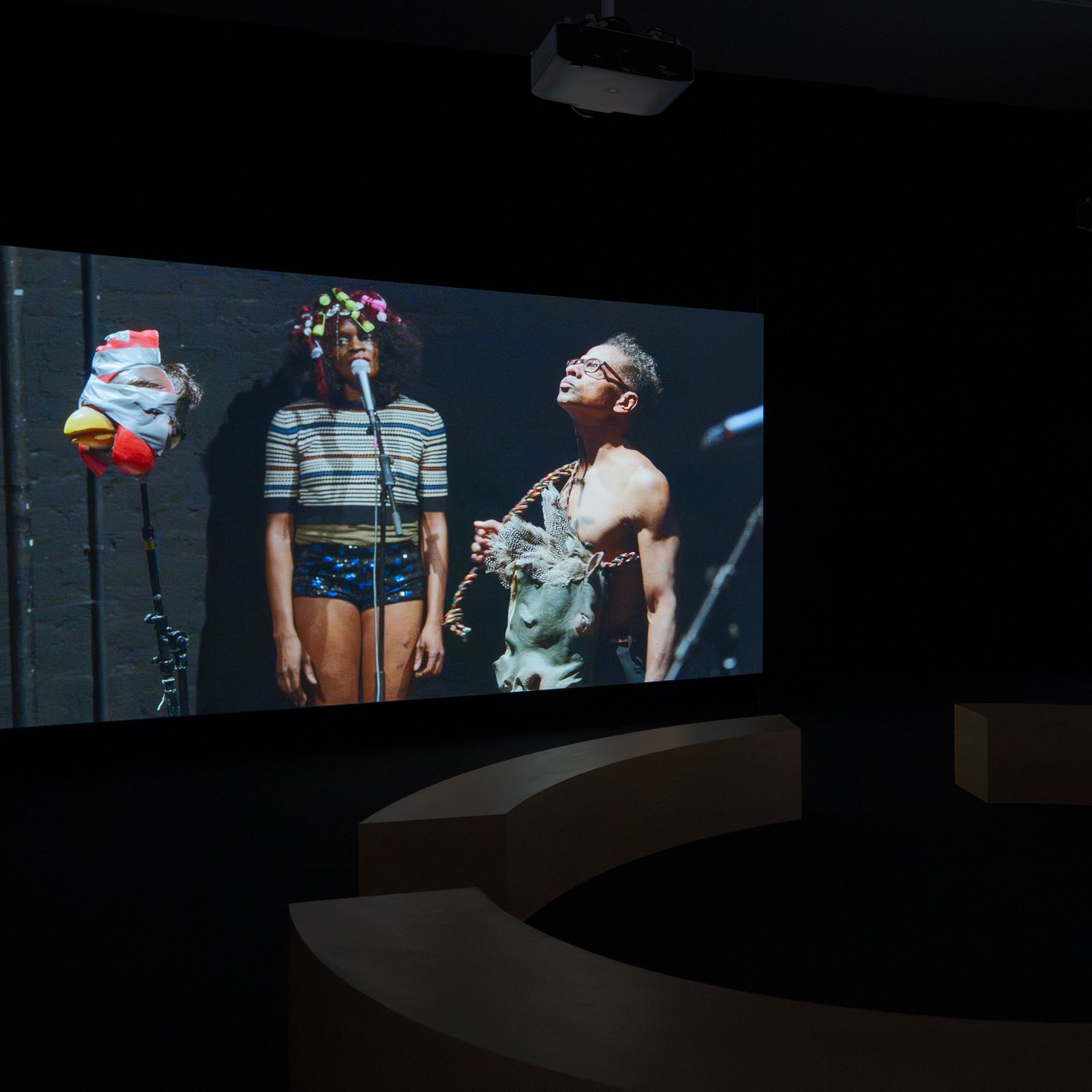By providing your information, you agree to our Terms of Use and our Privacy Policy. We use vendors that may also process your information to help provide our services.
One More for the Road
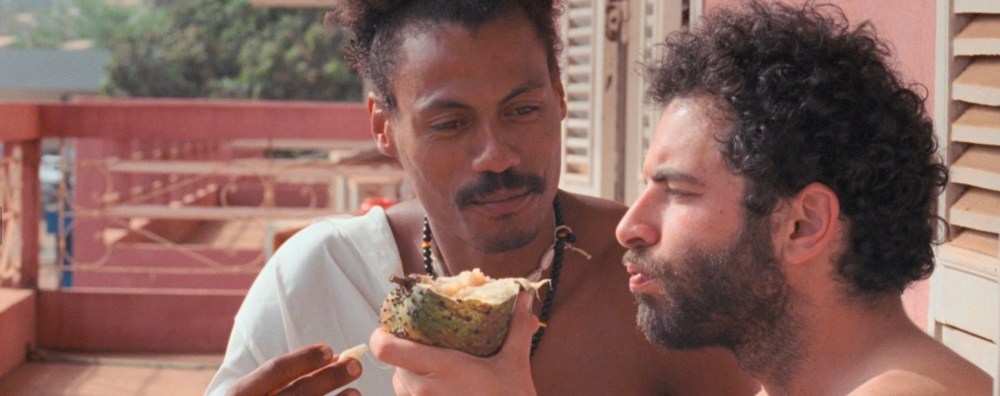
THAT THE FIRST CANNES FILM FESTIVAL without a posthumous film by Jean-Luc Godard since the filmmaker’s death in 2022 included instead a high-profile historical fiction about the making of the director’s first feature, Breathless (1960), proved appropriate for an event that’s reluctantly transitioning into a new era. Critics gripe that the festival fills out its Competition lineup with a lot of the same tired names each year, but its track record for elevating interesting new talent isn’t much better. That’s how, in 2025, we’re stuck with the likes of Oliver Hermanus (The History of Sound), Saeed Roustaee (Woman and Child), Hafsia Herzi (The Little Sister), Tarik Saleh (Eagles of the Republic), and Chie Hayakawa (Renoir) competing alongside usual suspects Dominik Moll (Case 137), Mario Martone (Fuori), Joachim Trier (Sentimental Value), and Jean-Pierre and Luc Dardenne (Young Mothers)—a mishmash of mediocrity in which no one, least of all the viewer, wins. Granted, this helps the truly ambitious and big-swing type of films stand out from the fray. But for every Sound of Falling, a singularly stylized if somewhat overdetermined meditation on intergenerational female trauma by Germany’s Mascha Schilinski, there’s an incoherent, star-studded indulgence like Lynne Ramsay’s Die, My Love or an execrable piece of faux-provocative pablum like Julia Ducournau’s Alpha, a thinly veiled AIDS allegory that’s so ugly and misguided in its body-horror gestures as to kill any goodwill the French filmmaker may have built up with her Palme d’Or–winning Titane (2021).
More than most, Cannes’s seventy-eighth edition felt scattershot and without a unifying vision or personality. Especially in the Competition, the programming approach seemed to be to throw anything and everything at the audience in hopes of inciting a reaction. But you can’t falsely generate controversy—at least not like before. Indeed, with so many of the big-ticket films now arriving to the festival with distribution deals already in place, it creates a series of self-fulfilling events where critics are so invested in seeing, say, Ari Aster’s Covid-era comedy Eddington (a movie whose tonal imbalance and blunt social commentary would have, in the not-so-distant past, at least stoked an audibly divisive reaction), that they can’t boo the film when it ends because they already applauded A24’s logo when it began. This could be one reason I found myself drawn to some of the more classical (or least sensational) films in this year’s Competition, such as Richard Linklater’s Nouvelle Vague, the aforesaid Godard tribute, which is so unfashionable that its ho-hum critical response was all but preordained. Like most of Linklater’s films, it isn’t about anything so important as a political or social issue—unless, of course, you believe the history and vitality of cinema itself to be a political issue, which Linklater clearly does. Unsurprisingly, despite its rich evocation of a bygone era of French cinephilia—no film I’ve ever seen has so accurately captured the aesthetic of those early New Wave classics, not to mention the pinpoint re-creations of Breathless’s shooting locations and the original Cahiers du Cinéma offices—Nouvelle Vague went unrewarded by Juliette Binoche’s jury, which largely opted for films with more obvious thematic heft.
In the case of Jafar Panahi’s It Was Just an Accident, which won the Palme d’Or, this is no bad thing. It’s the sixty-four-year-old Iranian director’s first film after the unexpected lifting of a fourteen-year filmmaking and travel ban, meaning he was able to accept the award (his fourth top prize from a major European festival, following 1997’s The Mirror, 2001’s The Circle, and 2015’s Taxi, which triumphed at Locarno, Venice, and the Berlinale, respectively) in person, though it was still made covertly, outside the purview of local authorities (save for some last-minute threats that ultimately proved futile with regard to finishing the movie). And for good reason: This is arguably Panahi’s most outwardly furious condemnation of state power and his most visceral depiction of the traumas suffered by political dissidents in years. Centered on a group of former prisoners (played largely by nonprofessionals) who capture a man whom they believe (perhaps wrongly) to be the intelligence agent who tortured them years prior, the film is more plot-driven and genre-coded than much of the director’s recent work, which has tended toward the theoretical and reflexive. If it lacks some of the formal and narrative resourcefulness of those films, some of which were made while Panahi was under house arrest, it makes up for it in storytelling rigor and dramatic power—two things in short supply in this year’s Competition.
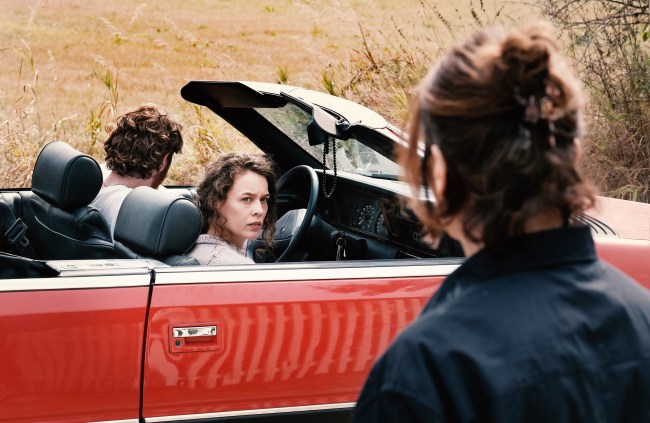
If Panahi’s Palme felt overdue, then Christian Petzold’s first-ever invitation to screen a film in any section of Cannes was so belated as to seem downright egregious. Premiering in the independently-organized Directors’ Fortnight program, Mirrors No. 3 is the German director’s eleventh theatrical feature and the third in a loose trilogy of small, mysterious films resembling modern-day myths or fairy tales. Starring Paula Beer as a troubled piano student named Laura, the film uses one of Petzold’s standby motifs, a car accident, as an inciting incident to explore broader themes of trauma, identity, and family. When Laura loses her musician boyfriend in the opening (off-screen) crash, she’s taken in by Betty (Barbara Auer), a middle-aged woman who develops a curious liking for the shell-shocked survivor. Laura quickly adjusts to life at Betty’s farmhouse, and soon enough she becomes acquainted with her host’s husband (Matthias Brandt) and adult son (Enno Trebs), who are living at the nearby auto repair shop that they operate together—one of a number of initially unexplained details that take on greater meaning as the characters’ backstories slowly come into focus. Like many of Petzold’s films, Mirrors No. 3 plays something like a spin on Vertigo (1958), with Laura, like Kim Novak’s Judy in the Hitchcock film, being remade into someone she’s not. But while the director, now firmly into the third decade of his career, continues to rework established themes, his style has become ever more spare and efficient. At eighty-six minutes, Mirrors No. 3 is Petzold’s most Bressonian film, its editing and compositional economy evincing a command of rhythm and visual storytelling that’s become increasingly rare in international art cinema.
Among the other sidebars, a few films caught my attention through either sheer scope or oddball charm. In Un Certain Regard, there were Pedro Pinho’s I Only Rest in the Storm, a sprawling three-and-a-half-hour chronicle of neocolonialism told through the civic and sexual activities of a white NGO employee working in West Africa, and Francesco Sossai’s lovably ramshackle sophomore feature, The Last One for the Road, a Kaurismäki-worthy tale of two old Italian drunks on a multi-night bender that easily eclipsed the section’s many other so-called discoveries. Lav Diaz, meanwhile, made an overdue return to the Official Selection twelve years after Norte, the End of History (2013) brought the Filipino director’s signature brand of durational cinema to its largest audience to that point. His latest, Magellan, which premiered in the catchall Cannes Premiere section, is his first film shot in color since that landmark work, as well as, at 156 minutes, one of the shortest. More significantly, it’s his first with an international star (Gael García Bernal), which may account for the return invitation to the festival, but not for the evident care put into every frame of this exquisitely imagined film.
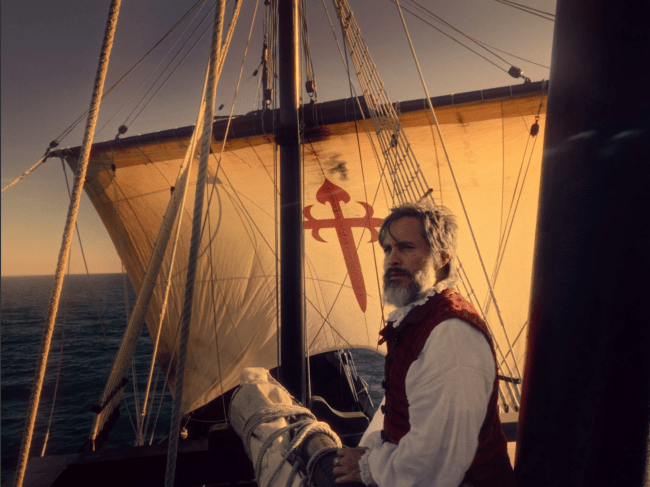
In the title role, García Bernal guides us through the Portuguese conquistador’s violent campaigns across Southeast Asia (including the Philippines) in the early sixteenth century, during which time he meets his future wife, Beatriz (Ângela Ramos), a young handmaiden who haunts the film in brief appearances that hint at a rich life left tantalizingly out of view. (Originally titled Beatriz, the Wife and clocking in at nine hours, the film was cut down to its current runtime and retitled for Cannes, though Diaz says that he hopes to release the full version in the future.) Working with Spanish cinematographer Artur Tort (known for his work with Catalan director Albert Serra, who coproduces), Diaz achieves a new level of visual splendor here, trading his customary widescreen, black-and-white imagery for vivid tableaux framed in Academy ratio. Coupled with the idea to arrive at each setting just after the bloodshed has transpired (there are no battle scenes here), it’s a decision that further enhances the film’s destabilizing rendition of this history. The look and texture of the film is also a good reminder of Diaz’s oft-unacknowledged stylistic acumen, proof that his visual language can translate to different cultural contexts without diluting his formalist tendencies.
Back in the Competition, three films salvaged what for long stretches felt like a festival short on intrigue, let alone innovation. Kelly Reichardt’s 1970s-set heist movie The Mastermind is another of the director’s patented genre deconstructions (see the Old West revisionism of 2010’s Meek’s Cutoff and the eco-thriller machinations of 2013’s Night Moves, among others), but it sets itself apart from those films with its low-key energy and its loose, almost slack, approach to narrative. Starring Josh O’Connor as an unemployed suburban dad turned amateur art thief, the film follows the character as his half-assed plot to steal four Arthur Dove paintings from a local museum with the help of some low-rent thugs falls apart in the aftermath of the robbery. True to form, Reichardt depicts these plot points in a wry, observational style bordering on the absurd, while dressing up the story in the trappings of a period-appropriate thriller, including an infectiously jazzy score by Rob Mazurek that offers its own form of commentary on the increasingly unraveling drama. With the help of her regular cinematographer Christopher Blauvelt, Reichardt captures both the look and spirit of a time in which a certain cultural malaise festered alongside larger political movements. Despite its sly stylistic ornamentation and lightly humorous tone, the film is up to something trickier and more shrewd than initially appears, which in the end may be its most quintessentially Reichardtian quality.
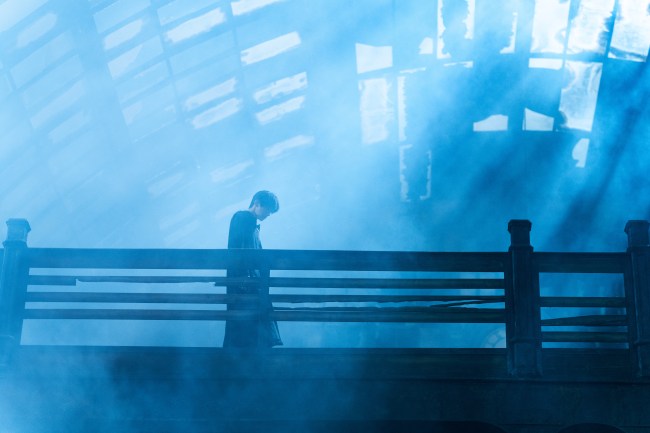
Scuttlebutt throughout the festival tended to revolve around one film: Bi Gan’s Resurrection. After being added to the Competition just days before the festival began, the film had several industry screenings and a private press preview canceled in the lead-up to the premiere, which was scheduled for the very end of the festival, begging the question of whether it would be ready to screen at all. Happily, it did, albeit with some unfinished visual effects. But no matter: Bi’s highly anticipated third feature, which won a vague “Special Award,” is as engrossing and transporting an experience as could be expected from the director of Kaili Blues (2015) and Long Day’s Journey into Night (2018), films that turn the director’s hometown of Kaili into a dreamlike space in which cultural and cinematic histories are made to mingle in immersive long takes or, in the case of the latter, a climactic sequence shot that was post-converted to 3D. For much of its opening stretch, however, Resurrection doesn’t resemble those two features so much as the director’s recent short film A Short Story (2022), a fable-like tale of a cat in search of a precious prize that employs a number of both early- and midcentury cinema techniques, including rear projection and miniatures. Resurrection has a similarly surreal setup, about a woman (Shu Qi) who inserts a film projector into the body of a man (Jackson Yee) so that his dreams can play out across the whole of the twentieth century, and it too employs an array of silent-cinema and classic-Hollywood signifiers, from intertitles and dioramas to artificial backdrops and expressionist lighting. Told in chapters, one for each of the five senses, plus a sixth that corresponds to the mind, the film unfolds like a tour through film history that culminates on New Year’s Eve 1999, with another of Bi’s now-signature tracking shots, this one running forty minutes and incorporating more action than ever before. Like the film as a whole, it’s a messy, thrilling ride, and one best experienced by fully surrendering to its logic.
All that said, the best and most full-bodied viewing experience at Cannes came by way of Oliver Laxe’s Sirât, the French Galician filmmaker’s fourth feature and first to premiere in Competition. (It shared the Jury Prize with Sound of Falling.) Set in Morocco’s Sahara Desert, the film centers on a Spanish father (Sergi López) and his adolescent son (Bruno Núñez) as they search for the man’s missing daughter at a rave. Taking up with a small group of revelers, they embark on a trip to another party across the desert where it’s rumored the girl may be found. Structured around a series of hypnotic music scenes and perilous driving sequences, Sirât—an Islamic term for a hair-thin bridge that spans over hell on the way to heaven—is part road movie, part dance film, a work that fully engages the senses as it plunges deeper and deeper into an abyss of spiritual and existential tragedy. Laxe has long been interested in cinema’s transcendental qualities, and he summons a kind of metaphysical power with this film that his past work has only hinted at. It’s also open and emotional in a way that feels new for a filmmaker who has oftentimes prioritized abstraction over characterization. Here, his characters bear the full weight of their environment as they confront the limits of both their bodily and spiritual selves. In other words, this is a film that deals directly with the idea of death, which is probably why Laxe cites Abbas Kiarostami’s 1997 Palme d’Or winner Taste of Cherry as a reference point. But unlike that movie, which follows a man as he drives across Iran to find someone willing to bury him after he commits suicide, nothing here is allegorical; this is filmmaking of a rare, primal power, shot through with uncommon rhythmic intensity. Maybe it’ll awaken something in cinema—or, at the very least, at Cannes, which could use an overhaul. To quote one of the ravers: “Blow it up!”
